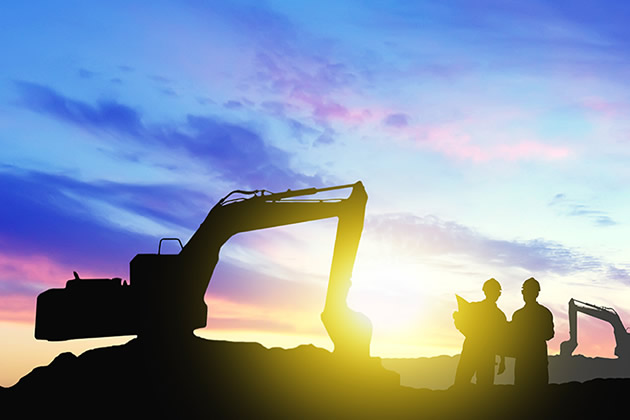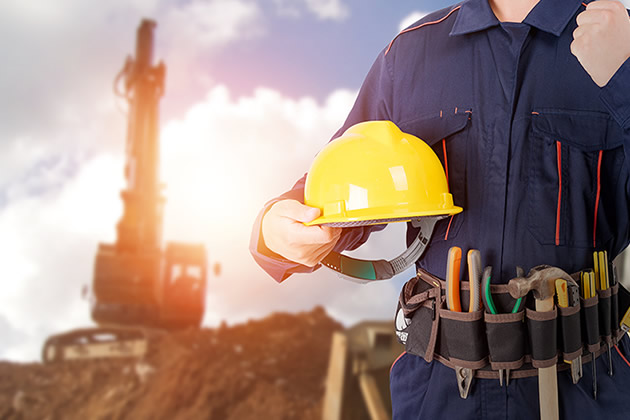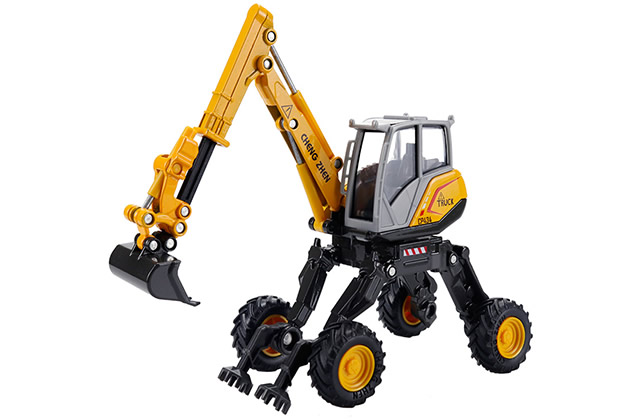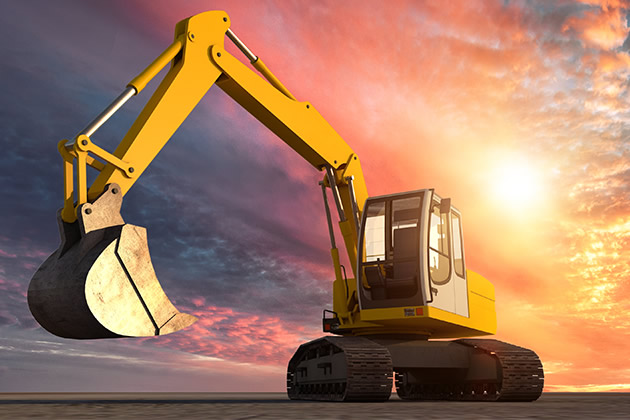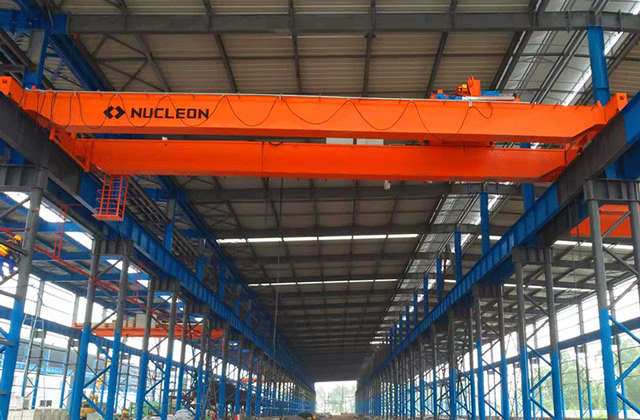Concrete mixing plant equipment Concrete mixing plant control system Concrete mixing plant model
Basic composition
The concrete mixing plant is mainly composed of a mixing host, a material weighing system, a material conveying system, a material storage system, a control system and other 5 large systems and other ancillary facilities. Compared with the aggregate measurement of the concrete mixing station, the aggregate measurement of the concrete mixing plant reduces four intermediate links, and the measurement is done vertically, which saves the measurement time and thus greatly improves the production efficiency. For the same model, the production efficiency of the mixing building is one-third higher than that of the mixing station.
Mixing host
The mixing host is divided into forced mixing and self-falling mixing according to its mixing method. Forced mixers are currently the mainstream used in mixing stations at home and abroad. They can mix a variety of concretes such as fluid, semi-dry hard and dry hard concrete. The self-falling mixing host mainly mixes fluid concrete and is rarely used in mixing plants at present.
Forced mixers are divided into spindle planetary mixers, single-shaft mixers and twin-shaft mixers according to their structural forms. Among them, the twin-shaft forced mixer has the best overall performance.
Material weighing system
The material weighing system is a key component that affects the quality of concrete and the cost of concrete production. It is mainly divided into aggregate weighing and powder weighing. There are three parts: material weighing and liquid weighing. Generally speaking, mixing plants with 20 cubic meters per hour adopt the superposition weighing method, that is, one scale is used for aggregate (sand, stone), and one scale is used for cement and fly ash. Weigh the water and liquid admixture separately using a scale, and then put the liquid admixture into the water weighing hopper for pre-mixing. In mixing stations with an output of more than 50 cubic meters per hour, the method of weighing each material independently is often used, and all weighings are controlled by electronic scales and microcomputers. The weighing accuracy of aggregate is ±2%, and the weighing accuracy of cement, powder, water and admixtures is ±1% span>.
Material conveying system
Material conveying consists of three parts. Aggregate transportation: Currently, there are two methods of transportation in the mixing station: hopper transportation and belt transportation. The advantages of hopper lifting are small footprint and simple structure. The advantages of belt conveying are large conveying distance, high efficiency and low failure rate. Belt conveying is mainly suitable for mixing stations with temporary aggregate storage bins, thereby improving the productivity of the mixing station. Powder conveying; concrete availableThe powder materials are mainly cement, fly ash and mineral powder. At present, the commonly used powder transportation method is screw conveyor transportation, and large mixing buildings use pneumatic transportation and scraper transportation. The advantages of screw conveying are simple structure, low cost and reliable use. Liquid transportation mainly refers to water and liquid admixtures, which are transported by water pumps respectively.
Material Storage Systems
The material storage methods available for concrete are basically the same. Aggregates are stacked in the open air (there are also closed silos used in large urban commercial concrete mixing stations); powders are stored in fully enclosed steel structure silos; admixtures are stored in steel structure containers.
Control system
The control system of the mixing station is the central nervous system of the entire equipment. The control system has different functions and configurations according to the different requirements of users and the size of the mixing station. Generally, the control systems of small mixing stations available at construction sites are simpler, while the systems of large mixing stations are relatively complex.
External supporting equipment
Water pipeline, gas pipeline, silo, etc.
Basic model
The specifications of the mixing station are named according to their theoretical production per hour. Currently, the commonly used specifications in our country are: HZS25, HZS35, HZS50, HZS60、HZS75、HZS90、HZS120, HZS150, HZS180, HZS240etc. For example: : HZS25 refers to a mixing station with a production capacity of 25 cubic meters per hour, and the main machine is a twin-shaft Forced mixer. If the main machine uses a single horizontal shaft, the model is HZD25.
Mixing stations can be divided into single-machine stations and double-machine stations. As the name suggests, single-machine stations have one mixing host in each mixing station, and double-machine stations have two mixing hosts. The main machine corresponds to one discharge port, so the two machines mixThe mixing station is 2 times the production capacity of a single-machine mixing station. The naming method of a dual-machine mixing station is 2HZS**, for example span>2HZS25 refers to the mixing capacity of 2*25=50cubic meters/ Hours of dual-machine mixing station.
Working principle
The concrete mixing station is divided into four parts:Sand and gravel feeding, powder material (Cement, fly ash, expansion agent, etc.) Feeding, water and admixture feeding, transmission, mixing and storage.The workflow is shown in Figure 1 ,After the mixer control system is powered on,enters the human– machine dialogue operation interface,The system performs initialization processing,Including formula number, concrete grade, slump, production volume, etc..Detect each silo and weighing hopper based on weighing, Output empty or full signal ,Prompt the operator to determine whether to start the stirring control program.Start the sand and stone belt motor to feed the material to the metering hopper ;Open the butterfly valves of the fly ash and cement tanks,Start the screw motor to transport the fly ash and cement to the metering hopper;Open the control valves of the water tank and the additive pool to allow water and additives to flow into the metering hopper.Open after the measurement meets the set requirements Measuring bucket gate,The ingredients enter the started mixer for mixing,Open the mixer door at the set time,The concrete enters the mixer truck that has received the material.
Daily maintenance
1 Ensure the cleanliness of the machine and surrounding environment.
2. Clear the accumulated material in the hopper promptly so that the sensor can return to zero normally.
3. Check whether the lubricating oil at each lubrication point is sufficient. The lubricator in the air system should maintain sufficient oil volume.
4. Check whether the motors and electrical appliances have overheating or abnormal noise, whether the instrument indications are normal, and whether the signal system is intact.
5. Regularly check and adjust the cylinder, butterfly valve and solenoid valve to ensure that the opening and closing meet the requirements.
6. Check each system frequently, and deal with any ash leakage, air leakage, oil leakage, electricity leakage, etc. in time.
7, mixer and discharge hopper should be cleaned every four hours to prevent residual concrete from solidifying and hindering normal operation.
8. Every shift, the accumulated water inside the air compressor, air storage tank and filter should be drained, and any faults that occur during operation should be eliminated.
9, butterfly valves, mixers, solenoid valves, air filters and lubricators should be maintained according to relevant instructions.
Maintenance of the aggregate supply system
1 Before each shift, the belt conveyor must be inspected for no load and the debris must be cleaned. If there are no objects, mud, etc., tighten the screws of each part to adjust the belt deviation. Each rotating part should rotate flexibly.
2. Change the oil of the electric drum regularly according to the instructions for use.
3. After six months of use, check and replenish the grease at the bearings of each rotating component. After that, perform a full disassembly and oil change once a year.
4. Regularly check and adjust the position of the scraper close to the belt to ensure normal material cleaning.
Measuring system maintenance
1. Each soft interface of the metering bucket must be checked and adjusted every shift to ensure that there is no looseness in the length. Ensure measurement accuracy.
2. After shutdown in winter, all water stored in the water supply system and admixture supply should be drained.
3 If the additive pump is stopped seasonally, it must be backwashed to prevent the additives from settling and sticking in the pipelines and pumps or from not being able to discharge the solvent.
Maintenance of the mixing system
1. Check the shaft end sealing cavity, distributor inlet and outlet and sealing pipeline every shift. Whether it is smooth, full of grease, and whether there is enough lubricating oil (grease) in each lubrication point and the reduction box.
2. Observe whether the grease in the oil storage tank of the electric lubrication pump is used up every shift. When it is almost used up, it must be filled up in time. Oil-free operation is not allowed.
3. During each work shift, the accumulated material inside and outside the mixing drum, discharge door, etc. must be completely cleaned and rinsed with water. The adhesive materials that are not rinsed clean must be cleaned regularly. Chisel away.
4. The mixing blades must be adjusted and tightened once a week to prevent the blades from falling off and causing accidents.
Powder supply system maintenance
1. The vibrator in the dust removal device on the top of the cement silo must be vibrated frequently every week. Next, clean off the dust on the dust bag (filter rod) to ensure smooth flow of air leakage.
2 The inner wall of the feed inlet conveyor pipe and the screw conveyor outlet must be thoroughly cleaned once a week to prevent hard agglomerates and debris from clogging and insufficient discharge failure.
3. If it is not used for a long time, the cement in the screw machine needs to be emptied.
4. The outer ball bearing at the head of the screw conveyor and the middle support bearing must be filled with grease every four hours (WAMThe screw machine does not require grease injection), the first oil change time of the tail gearbox is 500 hours of operation, and the grease will be changed once a year thereafter ( 00Lithium-based grease)
Gas system maintenance
(1 ) Air compressor maintenance:
The air compressor is the main body of the air source device and plays a very important role in the air circuit system. Therefore, the following aspects must be done during use.
1. Precautions before use:
(1) The air compressor should be placed horizontally, fixed, and well ventilated.
(2) It cannot withstand wind, rain, or exposure to sunlight.
(3) Adjust the upper and lower limits of the air pressure automatic switch. Too low pressure will cause the cylinder to move slowly, and too high pressure will cause damage to the air circuit. System seals are bad.
(4) Check the oil level of the lubricating oil and keep the oil level between the upper and lower lines of the dipstick. When the oil level is close to the lower line, add more New oil;
(5) Check whether the tension of the conveyor belt is appropriate. When pressing the belt with your fingers, the belt sag10mm Left and right are appropriate; when replacing the conveyor belt, the entire set should be replaced to maintain consistent tension.
2. Precautions during operation: During work, the operator should always observe the working pressure of the air compressor and do not allow it to exceed the rated value. Check for oil leakage, air leakage, and abnormal noise. If any abnormality is found, stop the machine immediately for inspection.
3、Maintenance:
(1) Drain the condensate water in time. After shutting down, open the drain valve under the gas storage tank and drain the condensate water.
(2) Replace lubricating oil regularly, generally determined based on the operating time of the air compressor, every 1000hours or 4 months.
(3) Clean the air filter element regularly. Because the filter element is too dirty, the air entering the compressor cylinder will contain too much dust, causing acceleration Wear of the cylinder and piston rings can easily form carbon deposits, affecting the sealing of the valve; in severe cases, it can cause cylinder pulls and blow-by, causing contamination of the lubricating oil and affecting the lubrication effect; when blow-by occurs, oiling will also occur Phenomenon, the gap between the cylinder wall and the piston ring is too large, and the contaminated lubricating oil will escape into the compression chamber and form oil mist, thereby contaminating the compressed air.
(4) To clean the paper filter element, blow it from the inside out with compressed air; if it is a sponge-filled filter element, clean it with detergent Air drying)
(2) Use and maintenance of cylinder
The function of the cylinder is to convert the pressure energy of compressed air into mechanical energy. justUnder normal circumstances, the cylinder should be in place quickly with the on-off switch of the solenoid valve power supply; due to the repeated movement of the cylinder piston, it is very important to lubricate the cylinder wall and piston. Generally, the lubricating oil is atomized and injected into the air flow through an oil mist device, and then enters the lubricated parts with the air to achieve the purpose of lubrication. During the working process, it appears that the lubrication effect of the cylinder close to the lubricator is good, and the lubrication effect of the cylinder far away from the lubricator is poor. This situation is particularly obvious on the cylinder of the aggregate silo. The solution is to add an oil mist device in the middle of the air path of the aggregate bin. Apply a layer of butter to the piston rod to prevent rust. The most common failure of the cylinder is air leakage. Air leakage can be classified into two types: internal leakage and external leakage. Internal leakage means that the cylinder piston assembly is severely worn, causing the piston to leak air forward and backward, affecting the speed of the cylinder’s movement. In severe cases, the switch may not be in place; External leakage means that the end seal of the piston rod in contact with the cylinder is seriously worn and leaks, causing the piston rod to return slowly or even not return to the position .
( 3) Use and maintenance of solenoid valve
The function of solenoid valve is to adjust the pressure, flow and flow direction of compressed air. Various air paths can be formed by using solenoid valves to make the pneumatic actuators work normally according to the designed program. A common fault of the solenoid valve is air leakage. When the solenoid valve is not working (the air pressure is within the standard range), there is air leakage in the two exhaust ports on the side of the air inlet. The repair method is to disassemble the solenoid valve, clean all parts with clean diesel, dry it with clean cotton gauze and apply a small amount of engine oil on its surface; if the piston rod in the valve is seriously worn or the sealing ring is damaged, new parts should be replaced.
(4) Use and maintenance of oil-water separator and oil mist device
Output from the air source device, The initially purified compressed air generally needs to pass through pneumatic auxiliary components (such as oil-water separators, pressure regulating valves, lubricators, etc.) before entering pneumatic equipment. The function of the oil-water separator is to filter out moisture and particulate dust in the compressed air. Therefore, the sewage in the water cup must be discharged in time through the manual exhaust valve; the oil mist device is a special oil injection device. Its function is to atomize the lubricating oil and inject it into the air flow, and then enter the parts that need lubrication with the air. The lubricating oil in the oil mist device is ordinary diesel engine oil. The oil in the oil storage cup must be replaced in time. The capacity of the oil storage cup is calculated based on 100ml, and it is appropriate to use it for 100 hours. The function of the pressure regulating valve is to make its output pressure consistent with the actual required pressure of each pneumatic equipment and device, and to maintain the stability of this pressure value.
If the website content violates your rights, please contact us to delete it。



